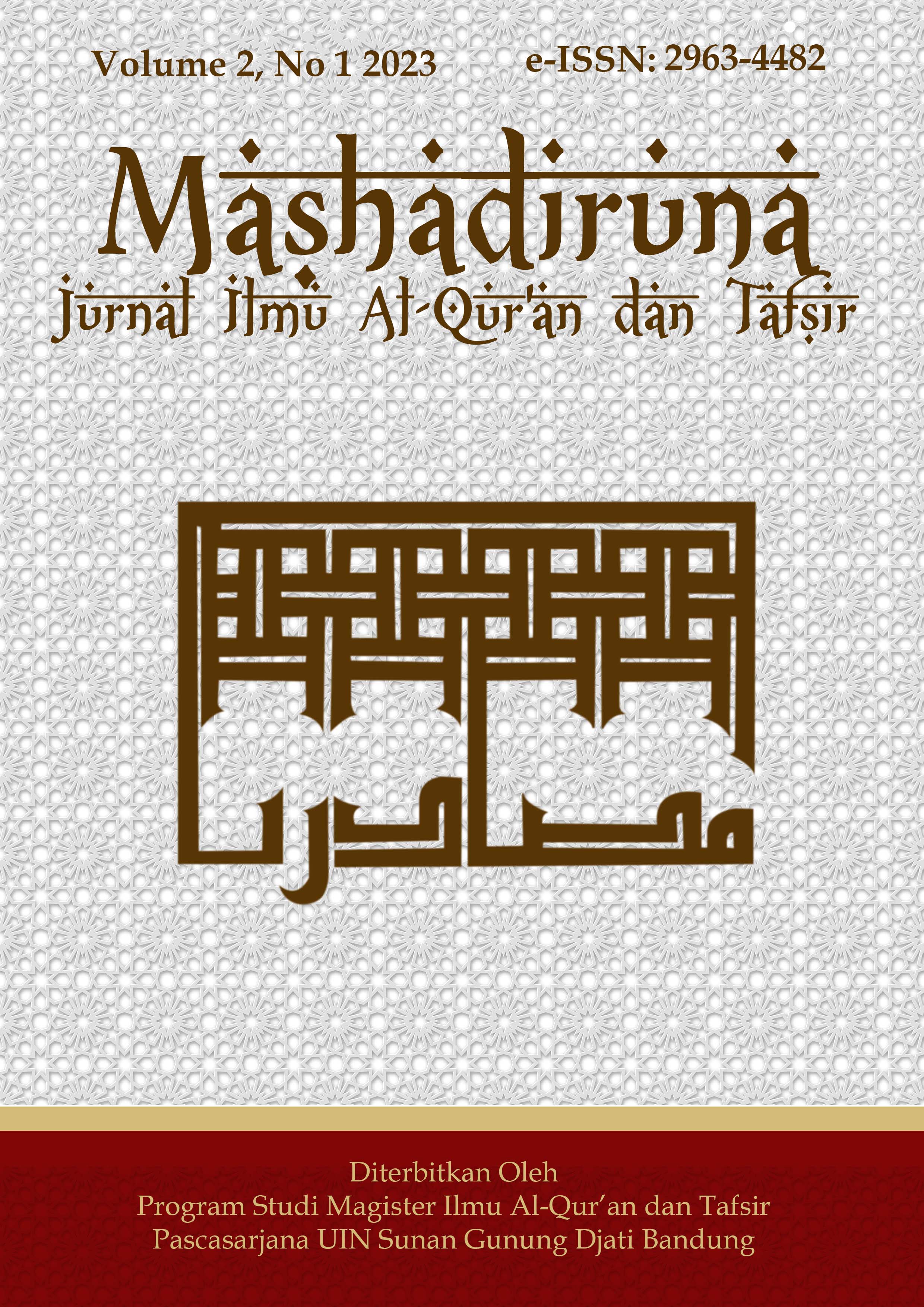AsbÄb Al-IkhtilÄf FÄ« TafsÄ«ri I Al-Salaf: Understanding the Reasons for Differences in Interpretation Among the Salaf Scholars
DOI:
https://doi.org/10.15575/mjiat.v2i2.25307Keywords:
Tafsir, Ulum al-Qur'an, Methods of interpretation. AsbÄb Al-IkhtilÄf FÄ« TafsÄ«ri I Al-Salaf.Abstract
This writing aims to understand the definition of ushul al-tafsir, tafsir, reference books of tafsir, its history, the legal aspects of studying tafsir, and its divisions. The research method employed in this study is library research and literature review. The results of this research reveal that the core subject matter is that tafsir explains the meaning of Quranic verses, the context of the story, and the reasons for the revelation of these verses using expressions that convey the apparent meaning. The practice of interpretation has existed since the time of the Prophet Muhammad and has evolved to the present day. In the study of tafsir, there are numerous sources or references as reading material, and it is highly recommended to study it. Tafsir can be divided into three categories, including considering what is known about the commentator, the approach used to attain it, and the methods of interpretation.
References
Abidin, A. Z. (2019). Ikhtilaf Al-Mufassirin: Memahami Sebab-Sebab Perbedaan Ulama Dalam Penafsiran Alquran. Jurnal At-Tibyan: Jurnal Ilmu Alqur’an Dan Tafsir, 4(2), 285–306.
Ahmadi, S. (2019). Kaidah Tarjih terhadap Penafsiran Ayat-Ayat Musytarak, Gharib Dan Ta’ârudh, dalam Al-Quran (Elaborasi Tafsir Rawâiul Bayân dan Shafwah al-Tafâsir, Karya Muhammad Ali al-Shabuni). Institut PTIQ Jakarta.
Al-Qattan, M. K. (2001). Studi Ilmu-ilmu al-Qur’an. terj. Mudzakir AS.
Athoyari, M. I. S. I. N. (1999). Fushul fii Ushul al-Tafsir. Dar Ibnu al-Jauzi.
Az-Zahabi, M. H. (2003). Al Tafsir wal mufassirun, Jld. 1. Kairo: Maktabah Wahbah.
Baidan, N. (2005). Metodologi Penafsiran Al-Qur’an. Pustaka Belajar.
Fathichatus, S. (2021). Kaidah Tafsir. Jurnal Al-Thiqoh, 4(1).
Ghinaurraihal, G., Zulaiha, E., & Yunus, B. M. (2021). Metode, Sumber dan Corak Tafsir Pada Penulisan Kitab Tafsir Isyaratul I’jaz Karya Said Nursi. Jurnal Iman Dan Spiritualitas, 1(4), 490–496.
Khatibah. (2011). Penelitian kepustakaan. Iqra’: Jurnal Perpustakaan Dan Informasi, 5(1).
M Yunus, B. (2019). An Analysis of al-Sya’râwî Tafsir Method: Islamic Educational Values in al-Sya’râwî Tafsir. Madania, 23(1), 71–80.
Manaf, A. (2021). Sejarah Perkembangan Tafsir. TAFAKKUR: Jurnal Ilmu Al-Qur’an Dan Tafsir, 1(2), 148–159.
Nuraini, N., & Zulaiha, E. (2022). Principles Methodology on Quranic Interpretation in Indonesia [Analysis on Interpretation Method of Tafsir Al-Azhar And Tafsir Al-Misbah]. Mashadiruna: Jurnal Ilmu Al-Qur’an Dan Tafsir, 1(1), 33–39.
Qardawi, Y. (1996). Al-kahasha’is al-ammah li al-Islam. In Kairo: Maktabah Wahbah.
Rosyad, A. (2015). qawaid tafsir: telaah atas penafsiran al-qur’an menggunakan qaul sahabat. ULUL ALBAB Jurnal Studi Islam, 16(2), 249–264.
Syam, I. K., Komarudin, E., & Taufiq, W. (2022). Types and Purposes of Kinayah in the Qur’an. Mashadiruna: Jurnal Ilmu Al-Qur’an Dan Tafsir, 1(1), 17–24.
Taufiq, W. (2008). Ideologi Di Balik Simbol-Simbol Surga Dan Kenikmatannya Dalam Ayat-Ayat Quran. Publikasi Ilmiah.
Yunus, B. M. (2017). Pendekatan Sufistik Dalam Menafsirkan Al-Quran. Syifa Al-Qulub, 2.
Downloads
Published
Issue
Section
License
Authors who publish with this journal agree to the following terms:
- Authors retain copyright and grant the journal right of first publication with the work simultaneously licensed under a Creative Commons Attribution License that allows others to share the work with an acknowledgment of the work's authorship and initial publication in this journal.
- Authors are able to enter into separate, additional contractual arrangements for the non-exclusive distribution of the journal's published version of the work (e.g., post it to an institutional repository or publish it in a book), with an acknowledgment of its initial publication in this journal.
- Authors are permitted and encouraged to post their work online (e.g., in institutional repositories or on their website) prior to and during the submission process, as it can lead to productive exchanges, as well as earlier and greater citation of published work (See The Effect of Open Access).
